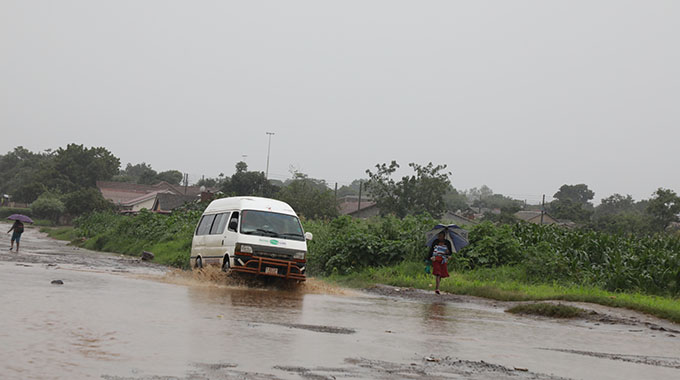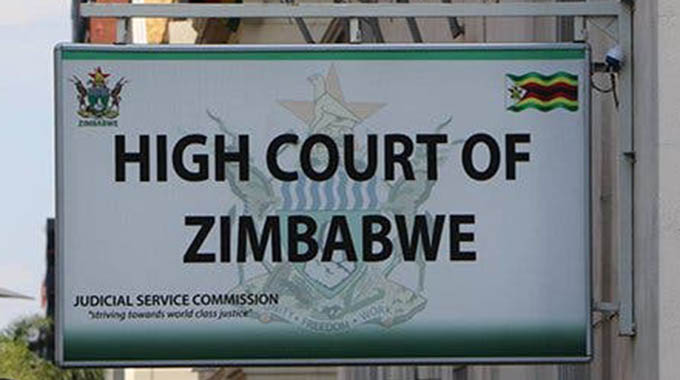Editorial Comment: Ignore stormwater, wetland encroachment at own peril

The scores of houses damaged by floods in parts of Budiriro in southwest Harare and Nyatsime in southern Chitungwiza emphasise the general neglect of storm water drainage by the local authorities and far too many residents in Harare Metropolitan.
This frustrates the engineers who know just what sort of volumes come down the streams and rivers in the area when heavy rains fall for days on end, and is supposed to happen in rainy seasons, and the need to get this water safely through and out of the cities and towns in the province and preferably neatly stored in water supply dams.
The problem is becoming ever worse as desirable development, with increasing housing and business densities, converts ever more rainfall into instant run-off.
At the same time the undesirable gradual encroachment into wetlands, and general neglect of these water sinks, means that when the floods come down there is no way of dissipating their force and getting the water to spread safely.
We see this with the Marimba River at Budiriro. This river is one of the two major Manyame tributaries in Harare.
The two drain almost the whole city outside the extreme edge of the northern suburbs and the large block of suburbs centred on Borrowdale and Glen Lorne in the northeast.
The Marimba rises in the southern half of Mount Pleasant and the University of Zimbabwe and all these little streams gradually combine into the river that drains most of the western half of Harare.
In the dry seasons it is a trivial stream, even at Budiriro close to its confluence with the Manyame when it flows into Lake Chivero.
But when it rains a lot of water comes down and is concentrated as it passes Budiriro. And the development over the last few decades concentrates this run off.
All those of roofs, roads, hardstand parking areas and the like do not absorb rain water, as a farm might, but just ensure that the rain becomes storm water immediately. That is why the river, especially in its lower reaches, rises so quickly.
At the same time housing planners and some illegal developers allowed Budiriro to edge ever closer to the river. The result is what we have seen.
There are solutions. One is to artificially deepen the river bed so more water can be carried in something close to a canal.
This was done with tributaries of the Mukuvisi in most of the inner ring of suburbs of Harare during earlier colonial times. But what was then called draining a swamp is now called destroying a wetland.
There may be good grounds for this, but before the draining can be done there are a lot of processes to go through first. In any case we need to be careful of just how we manage the catchments of the both the Mukuvisi and the Marimba.
Both flow into Lake Chivero and unless we are careful that lake will silt up with disgusting strata of garbage and mud mixed, some of it at least potentially toxic.
This is one reason for maintaining adequate streambanks on the minor tributaries of these two rivers and allowing some decent wetlands to remain along their length.
This is not wasted land. We need to set aside land for parks and recreation and just public open spaces, and wetlands can be used for these purposes rather than seeing a solid sea of concrete and brick and tile and roof sheets.
However, where we have made a serious mistake, in not allowing enough space for a river to flow into when run-off reaches high levels, we may have to allow some carefully planned and well executed digging of a new channel, but with the stress on the care needed to minimise the damage.
In time the other two river systems in Harare, the Gwebi across the far north of Mount Pleasant and Marlborough and the Umwindsi that drains the eastern half of Highlands, the suburbs to the east of Harare Drive, the whole of Glen Lorne and the whole of the huge Borrowdale area, will present similar problems.
Densities are increasing in these areas, mostly through cluster housing in guarded estates, but even low density urban development can mess up natural drainage and cause flash flooding.
We saw this a few years ago when intense rains on the hills to the north of Borrowdale Brook caused storm water surges further down the valley, damaging houses.
This brings us back to the street drains, and these are also causing some local flooding although so far no extreme housing damage, but still making life a misery.
Storm water drains do exist, but the ones in the city centre and surrounding areas are frequently clogged with rubbish, and the open drains in most of the rest of the city are neither maintained nor even kept open.
We have house owners filling them in to make a garden verge, or converting their driveway into a dam blocking the drain.
In law any local authority running any urban area has the absolute right to demand that property owners maintain storm drains properly on the edge of the properties, and avoid blocking them which includes laying culverts or culvert pipes under their entrance, or has the right to do this work by the authority itself, with any major removal of blockages being paid for by the property owner.
Harare does little or nothing, and so we see roads converted into rivers with all that water eroding what little remains of the road surface and creating the swirling currents that turn small cracks into major potholes.
Again for most the year no one needs a storm water drain, since there is no storm water, but when we have a normal season with heavy rain over several days the reason for the design and the laws over maintenance and the municipal maintenance itself become obvious.
This is why, from the stage where lay-out plans for development are approved, to the development of new suburbs to the maintenance of drainage in older suburbs, the city council, and the local authorities in the rest of Harare Metropolitan, need to maintain the drains, persuade property owners to assist, at least by not blocking them, maintain adequate wetlands to act as brakes on swirling floods, and do emergency but sensible emergency drainage where a past mistake must be rectified.
To talk about doing all of this sometime in the future is not much use.
Warnings were given months ago that we were likely to have a good season, which means a lot of rain, and far more should have been done then. But we can still move forward now and at least minimise the damage until the next dry season.








Comments